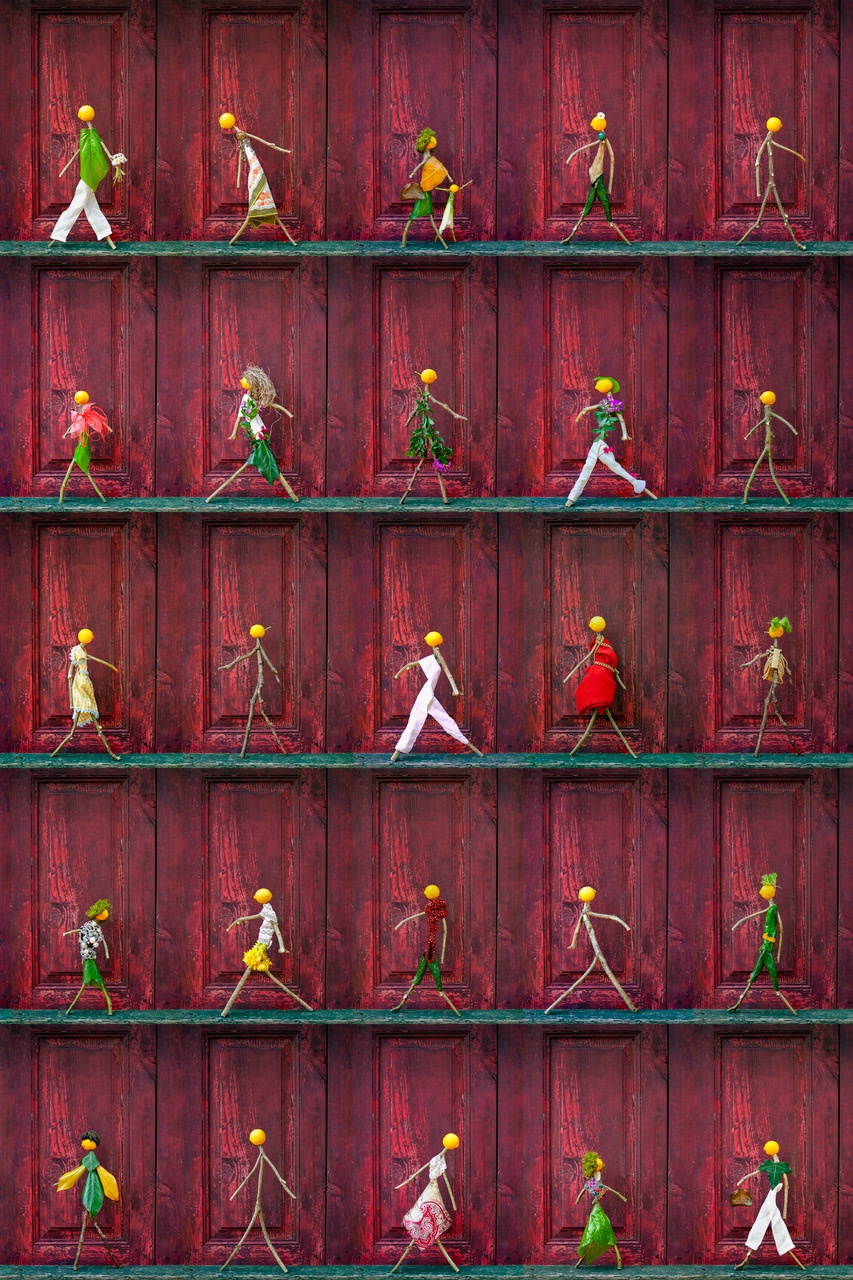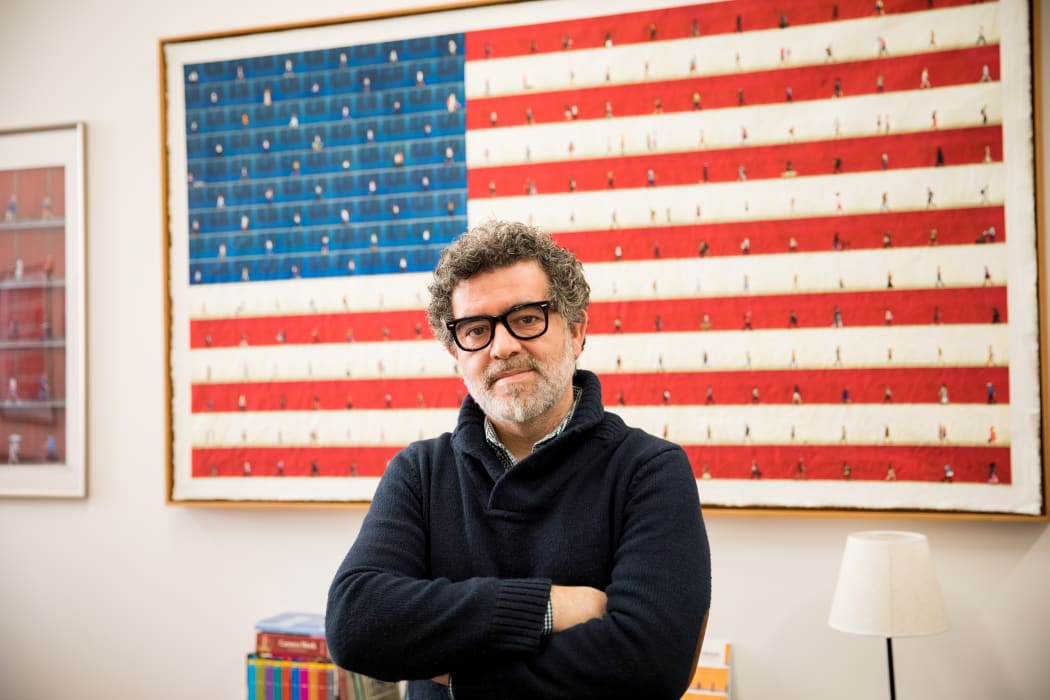
Xan Padrón. Courtesy of the artist.
Galician photographer, musician, and composer Xan Padrón is The CAMP's Artist of the Month for March 2023. His successful Time Lapse series is emblematic of his intentional and patient brand of observational photography.
The series offers viewers glimpses of life in typically nondescript pockets of cities around the globe: Brisbane, Beijing, and New York City (where he’s based), to name a select few. Padrón deftly merges his experiences much like he merges separate snapshots of folks minding their business as they pass by one locale. Each Time Lapse yields a meditative, composite portrait that highlights its site’s unique rhythm and aura, reminding us that sometimes, the most special moments are the ones we aren't even thinking about.
Read on to learn more about Padrón’s Time Lapse series, his process and influences, and what keeps this project so enduring.
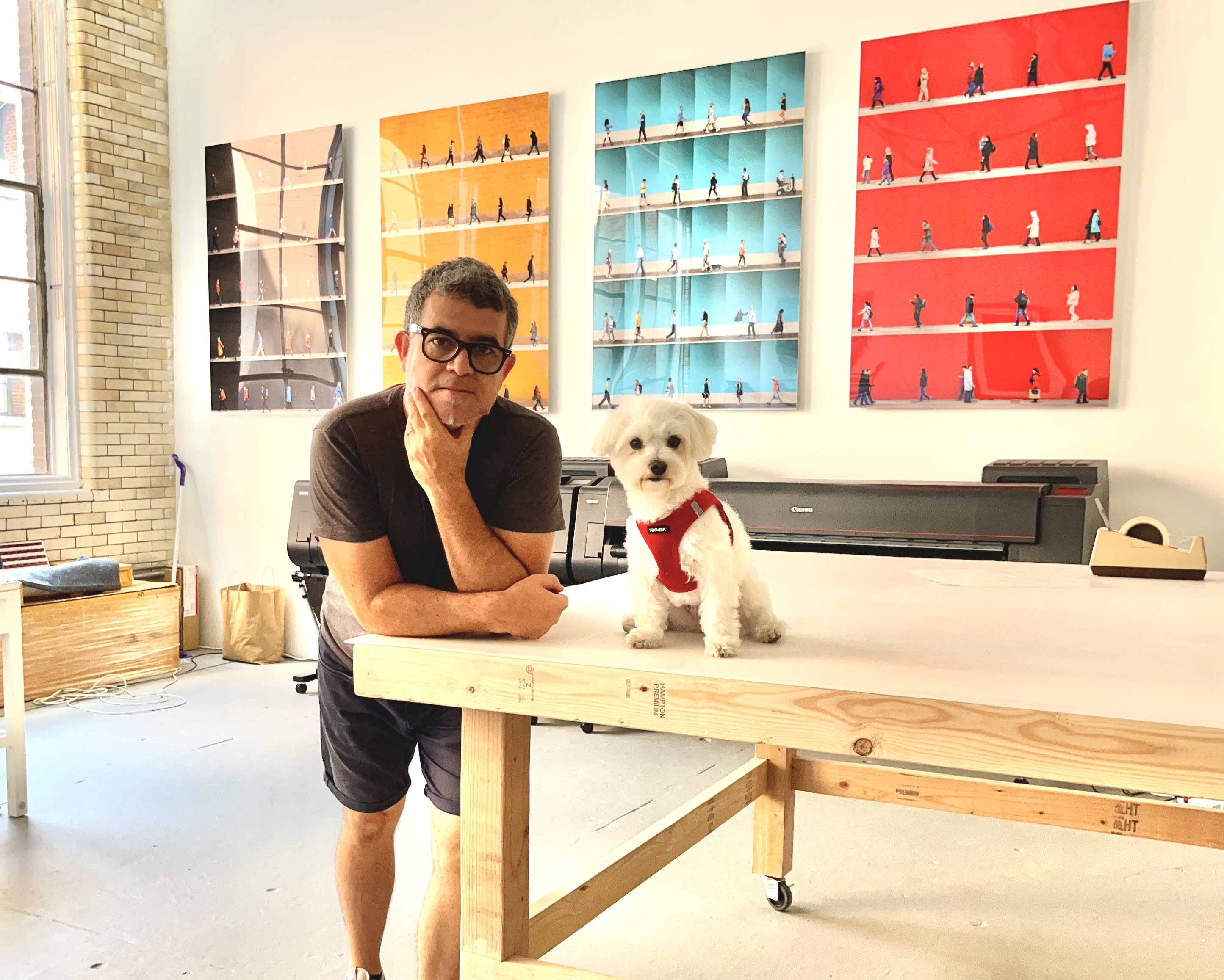
Xan Padrón (left) and his dog, Bimba (right) in a new studio. Courtesy of the artist.
When did you know that you were an artist?
It’s interesting, but now that you mention it, I don’treally recall a specific moment in my life in which I realized I was an artist. I have been exposed to art since I was a kid. I got my first camera when I was thirteen years old, and I do remember taking it everywhere and enjoying the process of not only taking the pictures, but also developing them. For a number of years, I also worked as a professional musician (bass player). I believe my photography, my language, is very much related to my experience as a musician, too
Is there an artist that you feel inspired you to become an artist? If so, who and how?
The small city in Galicia where I grew up was full of art and artists, and I was lucky to be exposed to [their] artistic processes. As a kid I frequently hung out in painters’ and sculptors’ studios, from my parent’s generation. My godfather was a photojournalist and I used to go to the darkroom with him. He also gave me the equipment to set up a darkroom in my parent’s house when I was a teenager.
Looking back, perhaps this exposure was my inspiration to become an artist—who knows! But what I can say for sure is how the work of street photographers like Saul Leiter, Diane Arbus, Helen Levitt, or Elliott Erwitt has inspired my own journey as a street photographer. Their way of finding beauty in the quotidian, and their way of looking at their surroundings, truly fascinated me.
Do you have a routine when creating art? What does your process look like?
My photographic practice becomes observation, since I don’t interact with the subjects of the images. The final composition is not as much about the images I take but about the life that emanates from that moment of pause. In other words, I think what I am trying to say is something as simple as “this is what happened while I was there”.
For my Time Lapse series, when I get to a city, I walk around until I find a backdrop that speaks to me. The reasons to choose the background can be different, sometimes is for aesthetic reasons, other times because I think it is representative of the place I am in at the moment, or just because I like the vibe of it. Then, for a period of time, I just photograph the people who happen to walk by. Sometimes, it takes me weeks to find the right place, and other times I see it right away. But even when that happens, the light that day might not be the right one, or there are simply not people walking through that place on, for example, a Sunday.
Then, after I spent a few hours taking dozens of pictures, I let it sit for a while. And after, when I look at those pictures on my computer and I start laying down the Time Lapse process, I start seeing things I didn’t see when I was taking the pictures—it’s like many different ways of seeing all together in one long process It usually takes me months to put the whole thing together. It’s like trying to make sense of a specific place…
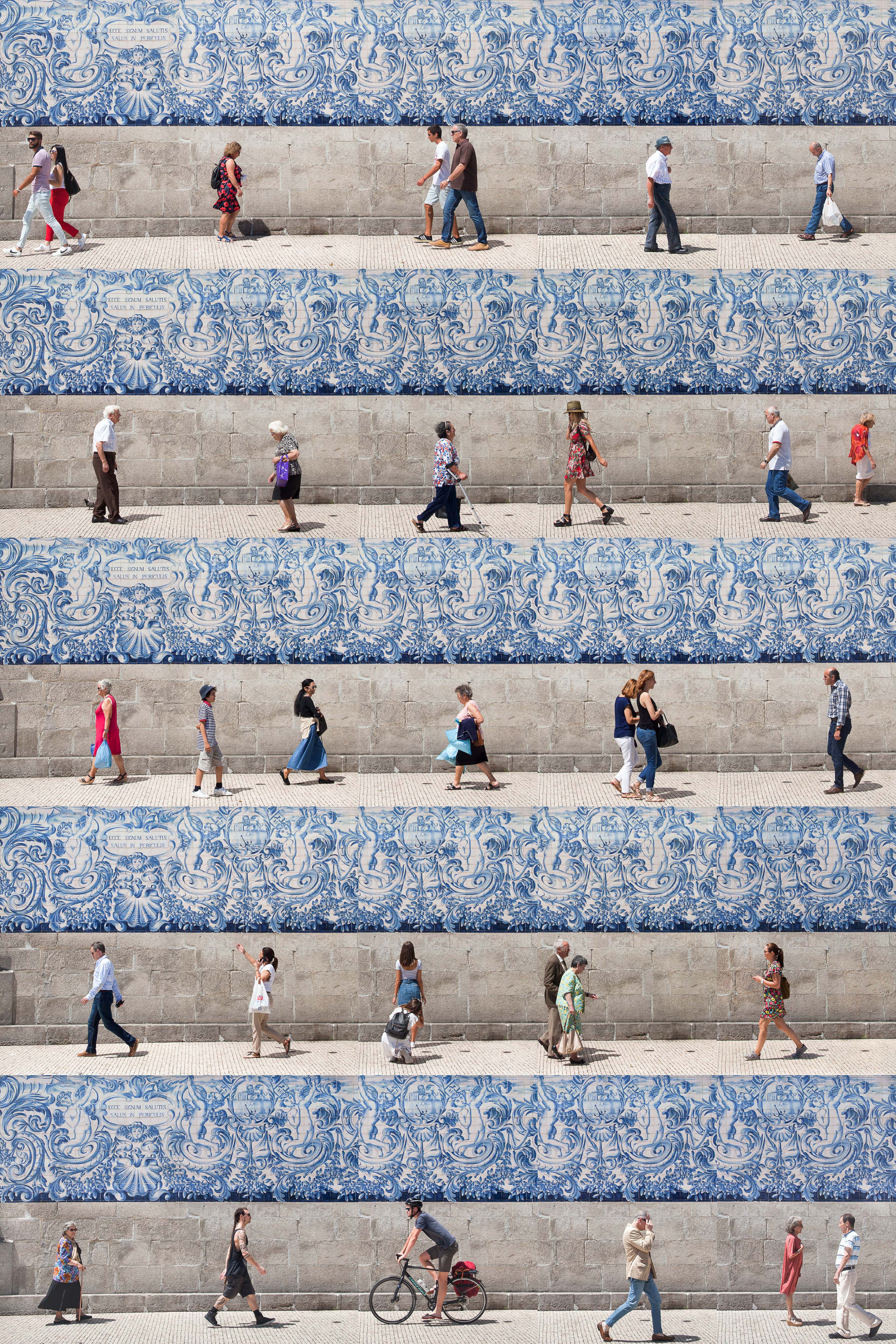
What are your biggest takeaways from your process?
My artwork is somehow the combination of all my passions. Traveling, walking through the streets, seeing the life that emanates from people, movement, time, rediscovering places and cities all over the world. I like to think about my work as some sort of sociological portraits of neighborhoods. It is amazing how much life happens in a single spot in any place. I
try to portray these cities exclusively through their regular, random people so the viewer can notice the particularities of the places we live in. The way we walk, how we dress, the sense of purpose, how we fit in the places we inhabit…
How do/have your observations of people change across time and place?
The interesting thing for me is that I focus on time and place, and that is always changing. As I mentioned, as a street photographer, I love to think about my work as some sort of sociological portrait, focusing on the street as a social space. The public spaces in our cities somehow become the theater of social life. Even within the same city, different neighborhoods have their own identity and the same street can feel totally different depending on the moment of the day you are in.
Then, there are external factors like the COVID-19 pandemic, which dramatically changed the human landscape in cities all over the world. I try to portray all those changes too. There is also the rhythm of a place, the colors, the sense of direction, the energy of that day, of that moment… that is what truly fascinates me. And of course, after all these years working on the Time Lapse series, seeing how our relationship with ourselves and with the space that surround us has developed through our use of technology has also been a fascinating journey. I’m still surprised at how fast we moved from people walking/waiting/traveling without their phones in their hands, and the reality we have today, in which we all use our phones when we are alone in public.
Does music play a role?
Before I moved to New York, I toured the world as a professional musician (I play electric bass) for over a decade. I’ve been traveling all my life, with my bass and my camera. At some point, I dropped the bass, [although] I actually think my street photography has a lot to do with being a bass player: always there, always invisible, always watching.
I used to travel a lot and take pictures in the different cities I visited. I also took many images of musicians and bands on stage. Navigating the two worlds, music and photography, gave me the chance to start working taking pictures for CD covers, concert posters, and finally for a magazine of performing arts. There are many common points that come to my mind in both disciplines, especially in my Time Lapse project. I like to think of the backgrounds of my images as a drone behind the rest of the elements. There is rhythm, harmony, patterns, speed…
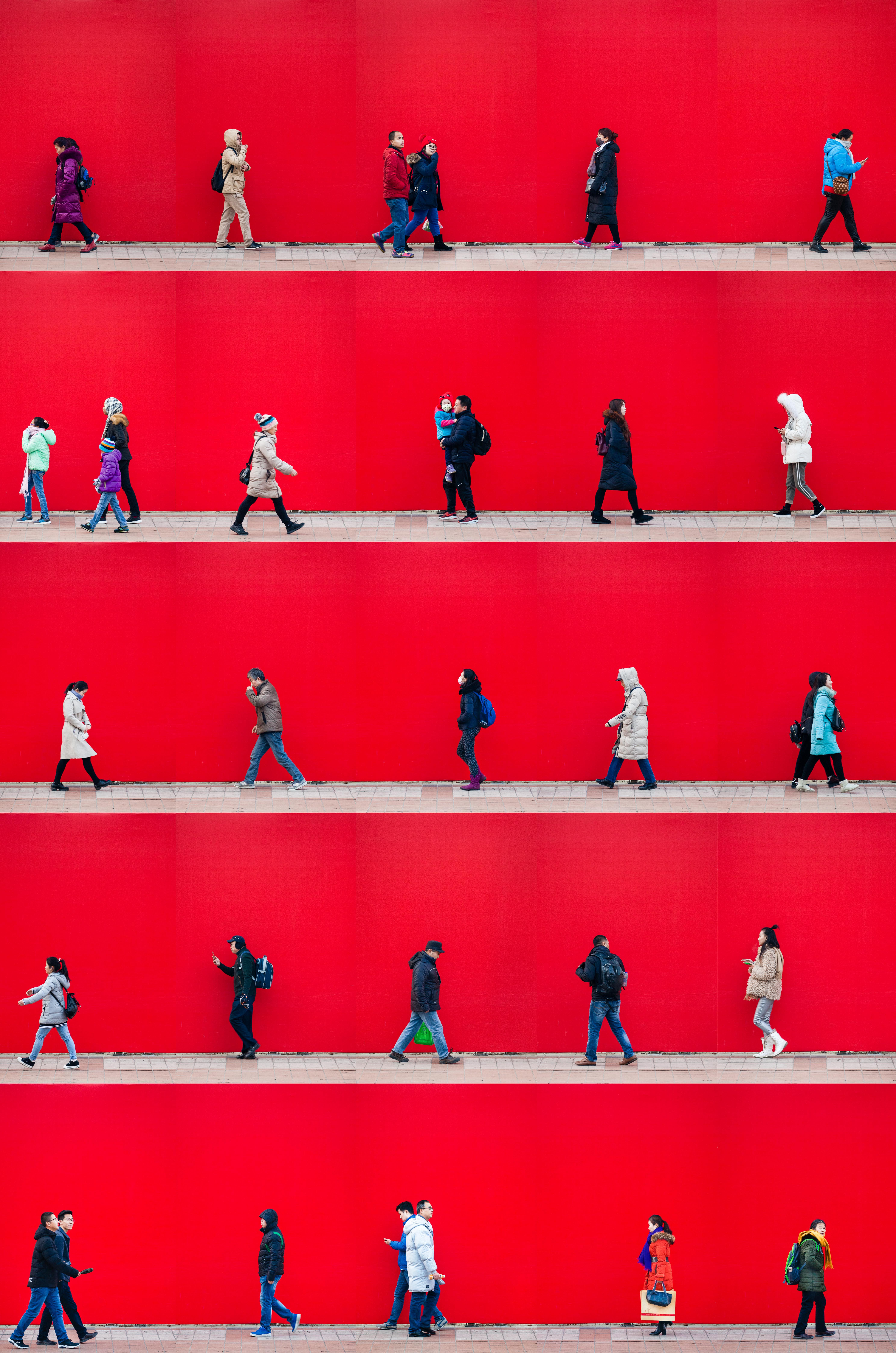
What is the most important thing you have learned about being an artist?
That this is a passion-driven journey, that it takes a certain amount of luck to be able to show your work to the world, and that if you are fortunate enough to be able to combine your passion with your profession, then life seems a little bit more bearable.
I’ve worked on many things in my professional life, but art has been the only constant factor, the only thing that kept me going no matter which direction my other life was going in. I always knew I had this beautiful thing I could practice and nurture everyday.
Where do you find inspiration?
I’m inspired by all those small and invisible things that happen around us, the ones we take for granted so we stop seeing them—like people walking, like the energy of cities and small villages, like the kind of life that emerges from just being.
Which is or was your favorite piece of your art?
I’m not sure if I have a favorite one, but the ones I took with lemons (Lemonheads COVID 19 Special Edition), at the beginning of the pandemic are very special to me.
My wife, her mother, and I were in confinement together, and since my mother-in-law suffers from dementia, we were looking for things to keep her busy and active while in lockdown. So, we created imaginary people with lemons and branches from our lemon tree, then we dressed them with whatever we had around us, and we invited them to walk by an old door, while we did a photo shoot. It was a very special moment, a testament to the role of creativity in our lives.
Which is your favorite museum/art space and why?
As a New Yorker, I love walking around the city and finding art everywhere. It’s fascinating how this city is actually a living museum in itself! My wife and I visit museums every week, sometimes because of a particular piece or exhibition and other times is just because the space is very inspiring. I couldn’t choose a favorite, but I can enumerate the ones we visit more often: Morgan Library, MET, Whitney Museum, Frick Collection and Fotografiska.
What do you want the viewer to gain when encountering your work?
Perhaps a moment of pause. A moment to reflect on the concept of time, on how we experience time and place.
If you could invite 4 artists from history to dinner, who would they be, what would you ask them and what would you serve them?
My list would be infinite, and as a good Galician, my door and my table would be open to everybody.
Just for the fun of imagining it, one image could be Dorothea Lange, Gerda Taro, Edward Hopper and El Greco on the same table, eating octopus in the Galician style, and talking about life.
